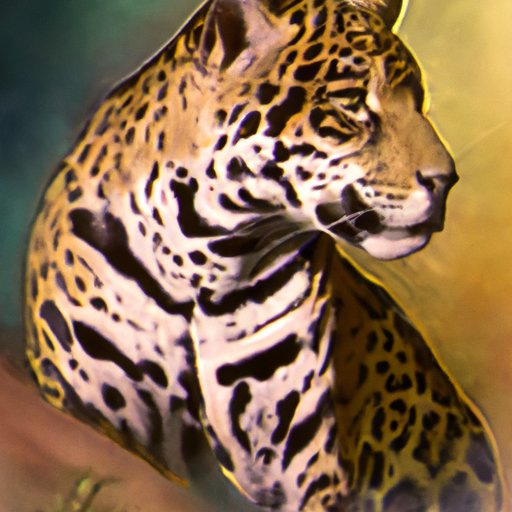
I. Introduction
Are you interested in learning how to draw a jaguar? Drawing this big cat can be both challenging and fun. Jaguars are beautiful creatures, with striking spots, powerful muscles, and keen eyes. Mastering the art of drawing this big cat can be an incredibly rewarding experience, whether you’re a beginner or a seasoned artist.
II. A Step-by-Step Guide to Drawing a Jaguar
Before you start drawing a jaguar, it’s important to have a clear idea of what you want your finished drawing to look like. Once you have this in mind, you can begin the process of breaking down the jaguar into simple shapes that you can use to create a more detailed drawing.
- Step 1: Start with basic shapes, such as circles, squares, and triangles.
- Step 2: Sketch the outline of the jaguar’s body, paying attention to the size and shape of its head, body, and tail.
- Step 3: Add on the details, such as the legs, paws, ears, and facial features.
- Step 4: Erase the basic shapes and contour lines, leaving only the outlines of your jaguar.
- Step 5: Shade in your jaguar, using a combination of light and dark tones to create a more realistic look.
Remember to take your time and practice your jaguar drawing skills as much as possible. With enough time and patience, you’ll be able to create a beautiful, realistic jaguar drawing.
III. Tips for Drawing Realistic Jaguars
One of the biggest challenges of drawing jaguars is making your drawing look realistic. Here are some tips and tricks that you can use to create a more realistic-looking jaguar.
- Tip 1: Use reference photos to get a better understanding of the jaguar’s unique fur pattern and color.
- Tip 2: Pay close attention to the lighting in your reference photos, and use this to inform your shading.
- Tip 3: Don’t be afraid to experiment with different techniques to add texture to your jaguar drawing, such as cross-hatching or stippling.
- Tip 4: Focus on capturing the jaguar’s unique features, such as its muscular build, sharp teeth, and striking eyes.
IV. The Importance of Understanding Anatomy When Drawing Jaguars
In order to draw a realistic-looking jaguar, it’s important to have a good understanding of the animal’s anatomy. This can help you to get the proportions of your drawing right, and to capture the jaguar’s unique features more accurately.
When drawing a jaguar, pay attention to its key structural components, such as its powerful legs, muscular body, and sharp claws.
V. Breaking Down the Details of the Jaguar
When drawing a jaguar, it’s important to get the details right. These include things like the jaguar’s spots, eyes, and fur texture.
- Tip 1: Use a variety of shading techniques to capture the jaguar’s fur texture, including adding highlights and shadows to create depth.
- Tip 2: Focus on the jaguar’s unique features, such as the rosettes on its coat or the shape of its nose. Attention to detail is key to creating a realistic-looking jaguar drawing.
VI. Drawing Jaguars for Beginners
If you’re just starting out with drawing jaguars, don’t be intimidated! There are plenty of resources available to help you get started, including tutorials, online courses, and helpful books.
- Tip 1: Start with simple shapes and focus on getting your proportions right before you start adding details.
- Tip 2: Use a variety of pencils, such as hard and soft leads, to create a range of light and dark tones.
- Tip 3: Don’t be afraid to experiment with different techniques and approaches to find what works best for you.
VII. Using Shapes and Lines to Draw Jaguars
One of the best ways to approach drawing a jaguar is to begin with simple shapes and lines. These can be used to create the basic outline of your drawing, before you start adding in details and shading.
- Step 1: Start with a circle to create the jaguar’s head shape.
- Step 2: Add a rectangle for the jaguar’s body, and triangles for the ears.
- Step 3: Sketch the outline of the jaguar’s legs and paws, using curved and straight lines to create the shapes.
- Step 4: Add details, such as the nose, eyes, and fur texture, using a combination of lines and shading to bring your jaguar to life.
VIII. Conclusion
Drawing a jaguar can be a challenging yet rewarding experience. With the right tools, techniques, and approach, anyone can successfully capture the majesty of this big cat on paper.




